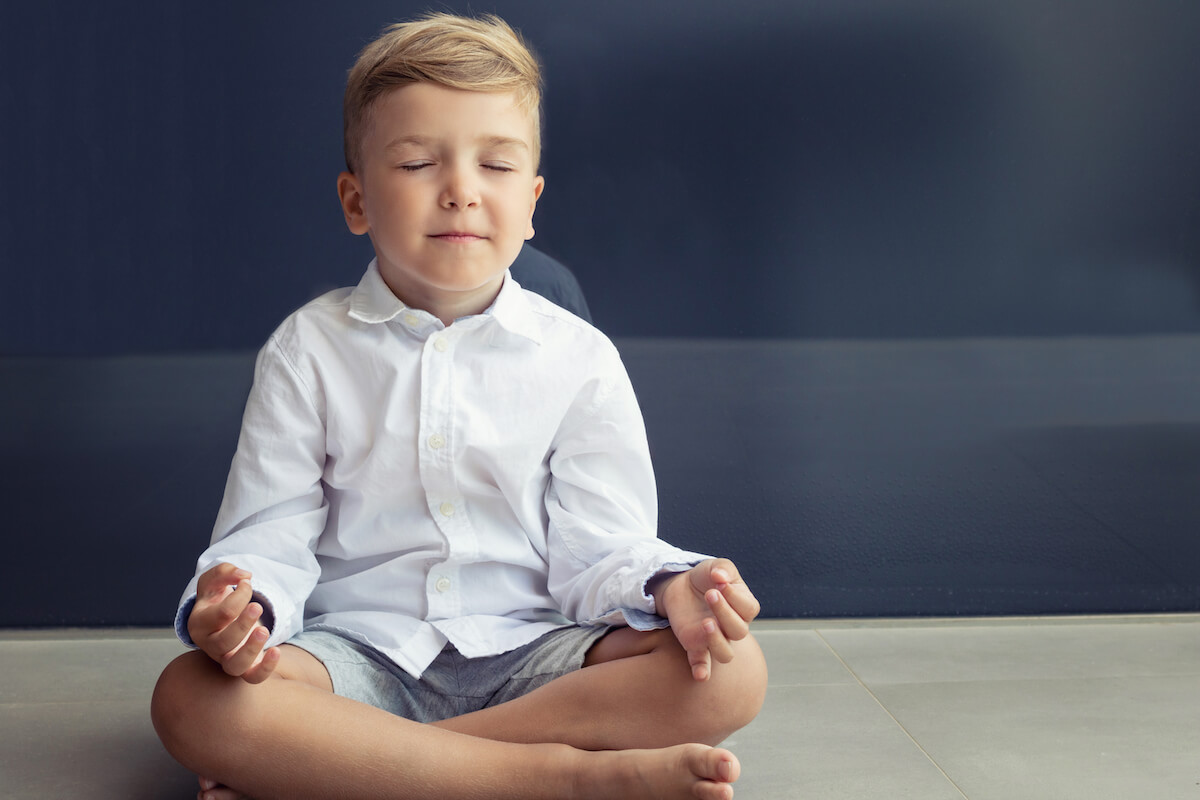
I think one of the most important gifts we can give our children today is the understanding and practice of mindfulness.
It's definitely not a new concept, as it's been around for centuries. Children throughout India and Asia are often taught to meditate and/or pray from the moment they can crawl.
Science has proven it so powerful that it can literally transform mental health and one's ability to focus on what matters most in life.
Why Mindfulness for Children Is so Important
With all of the distractions that children are faced with on a daily basis (including cell phones, iPads, video games, friends, and more), it's vital that they learn how to be quiet.
To learn to listen to the deepest part of their being.
Failing to can lead to a noisy, messy, and undisciplined mind that can barely reckon with the storms that rage inside.
When you think of generations past, they tended to spend far more time in silence reading books, enjoying moments in nature, using their imaginations with simple toys.
Most of us (both children and adults) have become so focused on external stimuli that we feel uncomfortable when all the distractions are gone. Instead of sitting with the silence, we reach for our cell phones or welcome loud distractions.
But what does it mean to connect with the deepest part of ourselves? And how do we communicate this to our children?
It Begins By Naming the Still, Quiet Voice
I grew up with a mom and a grandmother who spoke to me of the concept of a "Still and Quiet Voice." They both explained that I had to be quiet enough to hear it.
"It's where your conscience and the most real you lives," mom would share. "If you're always going and going, you'll never be able to hear it."
As I grew, I became more and more aware that when I deeply connected with this part of me, I was happier and kinder to others. I realized that it was the driver of my code of ethics and ability to find meaning in the world.
3 Simple Steps for Helping Your Child Be More Mindful
#1- Explain the concept of mindfulness to your child.
If you want to meditate/pray, try to explain the concept to your little one.
Tell them how important it is to be silent and while meditating/praying they can reflect on what they're thankful for and allow their mind to rest.
Set a time expectation and teach them how to find a posture that is comfortable (upright is best) and take deep inhalations and exhalations. Explain how the body needs large amounts of oxygen to infuse the mind and body with focused energy.
#2 - Start the day with a simple mediation or prayer.
Rather than jumping into the day and racing to the first activity, wake up 15 to 30 minutes earlier than usual and get your child out of bed.
Consider lighting some candles and creating a special environment for this exercise. Make sure the room and warm and comfortable.
In my mind, it doesn’t matter if you want to silently meditate or pray next to each other. We all have different approaches to connecting with the deepest part of who we are and this is a beautiful thing.
#3 - Have a short discussion after your mindfulness session.
After each session, take a minute or two to have a chat about the experience. Allow your child to express how they feel and answer any questions they may have.
The following is a great mindfulness meditation. It's a great way to introduce the to the concept to your child:
Would you rather say a prayer?
If you decide you'd like to pray together instead, consider taking a few minutes to pray out loud. Take turns and then end with a few minutes of silent prayer time.
Enjoying a moment of silent prayer together gives you both time to reflect inwardly rather than only externalizing thoughts and feelings.
Once you're done, take a few minutes to discuss any feelings at pop up. Your little one may have some feelings they want to share, and it’s important that you take time to listen and respond.
Inspire Your Child to Take Mindfulness Into Their Daily Life
One of the keys to this exercise is literally living a life infused with mindfulness. As the day progresses, your child (and you) will be faced with challenges and you must learn to meet them ease.
Teach your child to identify moments when stressed and confused, step aside for a moment, and then use mediation and/or prayer to recenter themselves.
This may mean excusing themselves from where ever they are and going to the restroom or quiet room for privacy.
Or, it could simply mean connecting with their breath to regain their composure.
Last Words
It's been said that mindfulness is an art — a practice that takes love and time. If you're open to the concept, the earlier you impress its importance to your child, the more natural mindfulness will be to them.
In a world that can be so complex, a healthy mind can make all the difference!






Thank you for sharing an important content I will try it with my two kiddos ????